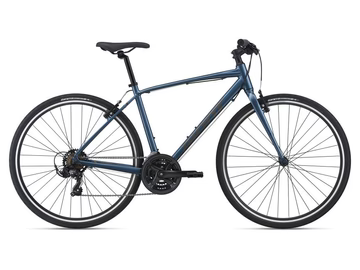The Positive Environmental Impact of Bicycle Riding: A Simple Solution for a Sustainable Future

In today's world, with growing environmental concerns, people are looking for green alternatives to lessen their carbon footprint. Cycling is one such eco-friendly option that's becoming more popular. Riding a bicycle, with its two wheels and various types, is not just good for your health but also great for the planet. In this article, we'll explore how cycling, from the traditional to the modern bicycle, helps the environment by cutting down air pollution and saving natural resources. If you're looking to find the best bicycle for your needs, you're also choosing a cleaner, greener way to get around.
Reducing Carbon Emissions Through Bicycle Use
One of the primary environmental benefits of cycling is its role in decreasing carbon emissions. Unlike motorized vehicles, bicycles produce no emissions during operation. Cars, trucks, and motorcycles, on the other hand, emit harmful greenhouse gases, contributing to climate change and air pollution. By choosing to cycle instead of drive, individuals can actively lower their carbon footprint, making a positive impact on the planet.
Improving Air Quality with Mountain Bike and Hybrid Bike RidesImproving air quality is crucial for both environmental and human health. One way to achieve this is by opting for mountain bike and hybrid bike rides instead of motorized vehicles. Cars and motorcycles emit harmful pollutants like nitrogen oxides and particulate matter, which contribute to smog and respiratory problems. Cycling, on the other hand, is a clean, emission-free mode of transportation. When more people choose to ride their mountain or hybrid bikes, it reduces the amount of pollutants in the air, leading to better air quality in urban areas. So, by choosing to cycle, we're not just helping the environment but also promoting healthier communities. |
 |
Conserving Natural Resources: The Role of Comfort Bikes and Tricycles
Conserving natural resources is essential for a sustainable future, and comfort bikes and tricycles play a significant role in this effort. Unlike motorized vehicles, which require large amounts of materials like steel and plastic for production and fossil fuels for operation, bicycles are simpler and more resource-efficient. The manufacturing process of comfort bikes and tricycles consumes fewer natural resources, and their operation doesn't rely on non-renewable energy sources. By opting for a bicycle instead of a car, individuals can reduce their energy consumption and lessen their impact on the environment. This shift towards cycling not only helps preserve natural resources but also promotes a more eco-friendly mode of transportation.
 |
Preserving Green Spaces with Eco-Friendly Cruiser BikesPreserving green spaces is crucial in urban environments, and eco-friendly cruiser bikes can play a vital role in this effort. As cities grow, the pressure to convert natural areas into built-up spaces increases. Cycling, however, requires minimal infrastructure compared to cars and buses, allowing for the conservation of parks and green zones. Using cruiser bikes for transportation means relying on existing roads and bike paths, reducing the demand for new construction that encroaches on nature. This not only helps maintain urban greenery but also supports biodiversity and a balanced ecosystem. |
Mitigating Noise Pollution: The Quiet Ride of a BMX
Mitigating noise pollution is another benefit of cycling, and the quiet ride of a BMX is a perfect example. Motorized vehicles are a major source of noise pollution, with their engines, horns, and overall traffic noise affecting both the environment and our well-being. Cycling, on the other hand, is a peaceful and non-disruptive way to get around. In busy urban areas, choosing a BMX or any other bicycle can help lower noise levels, making the city a more tranquil and enjoyable place to live.
Reducing Traffic Congestion with Increased Bicycle and Tricycle Use
Traffic congestion not only wastes time but also contributes to increased fuel consumption and emissions. Cycling offers a practical solution to alleviate congestion on roads. By opting for bicycles, individuals can navigate through traffic more efficiently, reducing the number of vehicles on the road and the associated negative environmental impacts. Furthermore, the promotion of cycling infrastructure, such as dedicated bike lanes, can enhance the overall flow of traffic, benefiting both cyclists and motorists.
 GIANT |
 |
 GIANT |
Promoting a Healthier Lifestyle: The Comfort of Bike Saddles
Promoting a healthier lifestyle is another advantage of cycling, and the comfort of bike saddles plays a key role in this. Although our main focus is on cycling's environmental benefits, we can't overlook its positive impact on personal health. When more people choose to cycle, it not only improves individual well-being but also eases the environmental burden on healthcare systems. These systems often face challenges related to sedentary lifestyles, such as obesity and heart disease. By encouraging cycling, we're supporting both a healthier population and a more sustainable environment.
Encouraging Sustainable Urban Planning for Riders of All Bike Types
The widespread adoption of cycling necessitates a shift in urban planning towards sustainability. Cities that prioritize cycling infrastructure, such as bike lanes, secure parking facilities, and bike-sharing programs, create an environment that encourages and supports cycling as a viable mode of transportation. Sustainable urban planning not only enhances the cycling experience but also contributes to overall environmental sustainability by reducing reliance on motorized vehicles.
Exploring the Environmental Impact of Different Bike Types: From BMX to Hybrid
Bicycles, with their simple yet efficient design, have a minimal environmental impact compared to motorized vehicles. When a rider pedals a bicycle, they propel the two-wheeled machine forward using only human power, significantly reducing carbon emissions. The handlebar and saddle are engineered for comfort, ensuring that the rider can navigate both urban and rural landscapes with ease. From the sturdy BMX to the versatile hybrid, each bike type offers a unique way to experience the joy of riding while minimizing one's carbon footprint. The rear wheel, crucial for balance and movement, along with the tandem option for two riders, showcases the adaptability of bicycles. By choosing to ride a bicycle, individuals can contribute to a more sustainable future, one pedal stroke at a time.
The Environmental Benefits of Different Bikes: A Conclusion
In conclusion, the environmental impact of cycling extends far beyond the individual act of riding a bicycle. From reducing carbon emissions and improving air quality to conserving natural resources and promoting sustainable urban planning, cycling emerges as a simple yet powerful solution for a more eco-friendly future. As individuals, communities, and policymakers increasingly recognize the positive effects of cycling on the environment, fostering a culture that embraces this sustainable mode of transportation becomes imperative. By choosing to pedal instead of drive, we can collectively contribute to a healthier planet for current and future generations.
